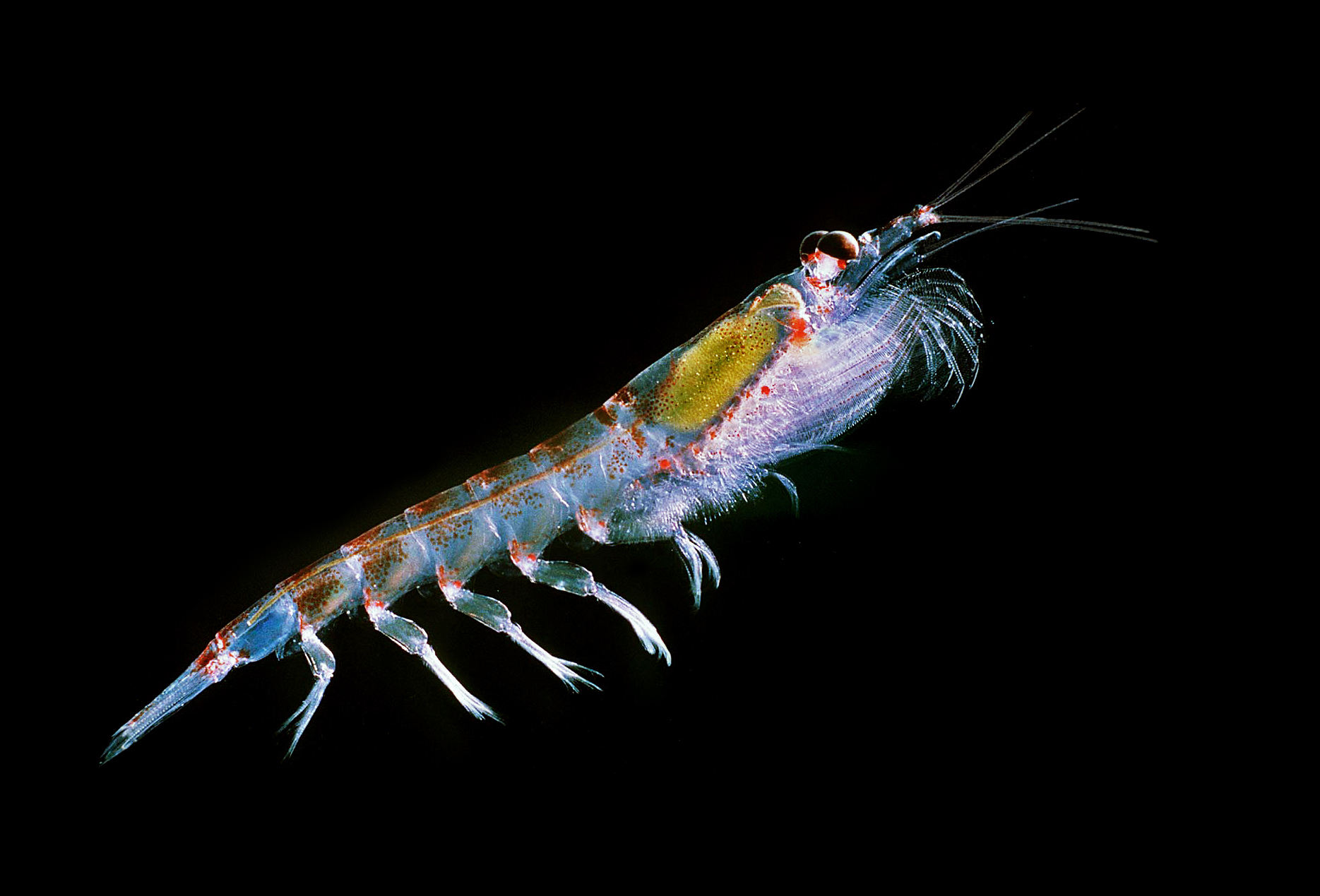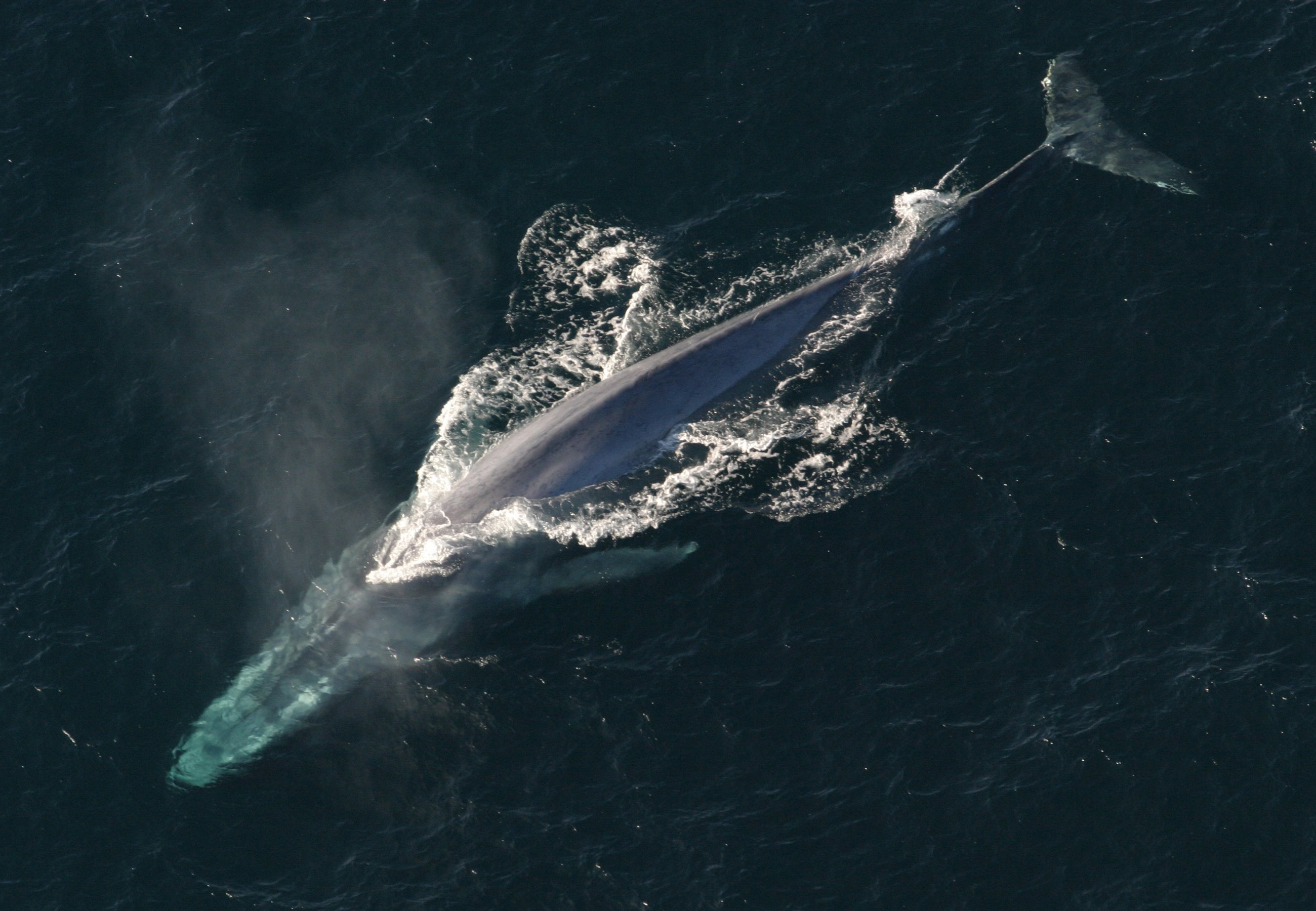How Whales Increase Fish Stocks and Help Control Global Warming
One of the most popular blogs I wrote in 2010 discussed how the recovery of the sperm whale population from near extinction to 12,000 individuals in the Southern Ocean had greatly increased that ocean’s biomass and had helped to mitigate global warming.1 Now, studies on blue whales, fin whales, and humpback whales establish that they, too, are making an enormous contribution to increasing the marine biomass and in helping to mitigate global warming.
Environmental Benefits of Sperm Whales
In the June 2010 issue of Proceedings of the Royal Society B, a team of eight marine biologists (seven Australian, one German) published their results of a multiyear study of sperm whales.2Sperm whales dive thousands of feet below the ocean surface to feed on giant squid. Their squid diet is very rich in iron. The eight marine biologists determined that sperm whales defecate only on the ocean surface, and noted that the whales’ feces are rich in soluble iron compounds.
Sperm whale feces fertilize the oceans’ phytoplankton with the nutrients they most need—soluble iron compounds. Thanks to sperm whales, the Southern Ocean sustains a much higher biomass (amount of living matter) of phytoplankton. This higher phytoplankton biomass permits a higher biomass of zooplankton, which in turn, makes possible a higher biomass of fish. The cascade of increased living matter explains why the return of the only predator species of giant squid has actually increased the population and body sizes of giant squid as a whole.
As a byproduct, the eight marine biologists calculated that the higher biomass of phytoplankton removes an extra 440,000 tons per year of carbon from the atmosphere through their photosynthesis. Since the 12,000 sperm whales respire 176,000 tons of carbon per year into the atmosphere, that means sperm whales are responsible for removing a net of 264,000 tons per year of carbon from the atmosphere. Thus, sperm whales are certainly doing their bit to remove carbon dioxide, a powerful greenhouse gas, from the atmosphere and, therefore, they play a significant role in mitigating global warming.
Environmental Benefits of Other Whales
New research achieved by seven marine biologists at the University of Tasmania led by Lavenia Ratnarajah extends the findings of the team of eight.3 Ratnarajah’s team focused on baleen whales and three species in particular: blue whales, fin whales, and humpback whales. Baleen whales differ from sperm whales in that they feed on krill instead of giant squid.
Krill are small marine crustaceans. They feed on phytoplankton and, to a lesser extent, on zooplankton. The diet of the whales studied by Ratnarajah’s team consists of Antarctic krill (see figure 1). Antarctic krill, in terms of total biomass, rank as Earth’s most abundant animal species. Their total biomass is approximately 500 million tonnes (550 million tons), comprised of 300–400 trillion individuals.4

Figure 1: Antarctic Krill. Body length = 1–6 centimeters. Image credit: Uwe Kils, Creative Commons Attribution
Ratnarajah’s team determined that the iron concentrations in Antarctic krill are a million times higher than typical Southern Ocean seawater concentrations. For the fecal matter of Southern Ocean baleen whales, the iron concentration is almost 10 million times higher. Thus, like the sperm whales, baleen whales enhance the marine biomass of phytoplankton, zooplankton, fish, marine mammals, and the removal of greenhouse gases from the atmosphere by fertilizing marine phytoplankton.
Blue whales (see figure 2) were even more impacted by the whaling industry than sperm whales. I was taught in my public school education that blue whales were extinct since a decade had gone by where not a single blue whale had been sighted. Since that time, I have had the pleasure of seeing blue whales. It is estimated that 10,000–12,000 blue whales exist in the world’s oceans today.

Figure 2: Blue Whale. The largest animal known to have ever existed, blue whales can attain a length of 98 feet and a weight of 190 tons. Image credit: NOAA
Before the proliferation of the whaling industry in the eighteenth and nineteenth centuries, the population of blue whales in the Antarctic Ocean alone was between 202,000 and 311,000.5 Blues whales were just as abundant in the rest of the world’s oceans.
Fin whales and humpback whales did not suffer the same impact from the whaling industry as did the blue whales. Nevertheless, the 2018 world population of fin whales, at an estimated100,000 individuals6, is less than half what it was before the eighteenth century. The pre-whaling industry population of humpback whales was an estimated 125,000 individuals and is less than half that number today.
Ratnarajah’s team calculated to what degree the pre-whaling industry populations of blue, fin, and humpback whales enhanced phytoplankton productivity compared to present-day levels. The enhanced phytoplankton productivity was up to 26 percent for blue whales, 16 percent for fin whales, and 3 percent for humpback whales, respectively (a total of 45 percent). However, uncertainties in the iron concentrations in krill are large. Based on the reported uncertainties,7 the enhanced phytoplankton productivity, if the whale populations were restored to pre-eighteenth-century levels, could be as low as 1.4 percent for blue whales, 0.8 percent for fin whales, and 0.2 percent for humpback whales, respectively (a total of 2.4 percent).
Population Restoration Produces Benefits
That is, the enhanced phytoplankton productivity for blue, fin, and humpback whales combined would range from 2.4 to 45 percent, if whale populations were restored to pre-eighteenth-century levels. The contribution from sperm whales and other species of whales would likely double (to 4.8 percent) these percentages.
Even the lower range percentage of 4.8 percent should give us humans a powerful incentive to restore the whale populations as quickly as possible. That 4.8 percent means the marine fish stocks would be increased by about 4.8 percent. It would also mean that the amount of carbon dioxide removed from the atmosphere by phytoplankton would increase by 4.8 percent. Since phytoplankton comprise about two-thirds of all the photosynthetic activity occurring on Earth, that 4.8 percent would count as a substantial step in mitigating global warming. It is also a substantial step that would augment, rather than subtract, from the global economy. The minimum benefit levels from restoring the whale populations alone give humans several more reasons to be grateful for these majestic creatures that bring us joy and appreciation for their pivotal ecological role.
Check out more from Reasons to Believe @Reasons.org
Endnotes
- Hugh Ross, “Thank God for Whales,” Today’s New Reason to Believe (blog), Reasons to Believe, August 23, 2010, https://www.reasons.org/explore/blogs/todays-new-reason-to-believe/read/tnrtb/2010/08/23/thank-god-for-whales.
- Trish J. Lavery et al., “Iron Defecation by Sperm Whales Stimulates Carbon Export in the Southern Ocean,” Proceedings of the Royal Society B, Biological Sciences 277, no. 1699 (June, 2010): 3527–31, doi:10.1098/rspb.2010.0863.
- Lavenia Ratnarajah, “The Biogeochemical Role of Antarctic Krill and Baleen Whales in Southern Ocean Nutrient Cycling.” Abstract. American Geophysical Union, Fall Meeting 2015 (December 2015): abstract id:OS13A-2019; Lavenia Ratnarajah et al., “Understanding the Variability in the Iron Concentration of Antarctic Krill,” Limnology and Oceanography 61, no. 5 (September 2016): 1651–60, doi:10.1002/lno.10322.
- Robin M. Ross and Langdon B. Quetin, “Euphausia superba: A Critical Review of Estimates of Annual Production,” Comparative Biochemistry and Physiology Part B: Comparative Biochemistry 90, no. 3 (July 1988): 499–505, doi:10.1016/0305-0491(88)90288-X.
- Trevor A. Branch, Koji Matsuoka, and Tomia Miyashita, “Evidence for Increases in Antarctic Blue Whales Based on Bayesian Modelling,” Marine Mammal Science 20, no. 4 (October 2004): 726–54, doi:10.1111/j.1748-7692.2004.tb01190.x.
- “Fin Whale,” NOAA Fisheries, National Oceanic and Atmospheric Administration, accessed 02/22/19, https://www.fisheries.noaa.gov/species/fin-whale.
- Ratnarajah et al., “Understanding the Variability.”





